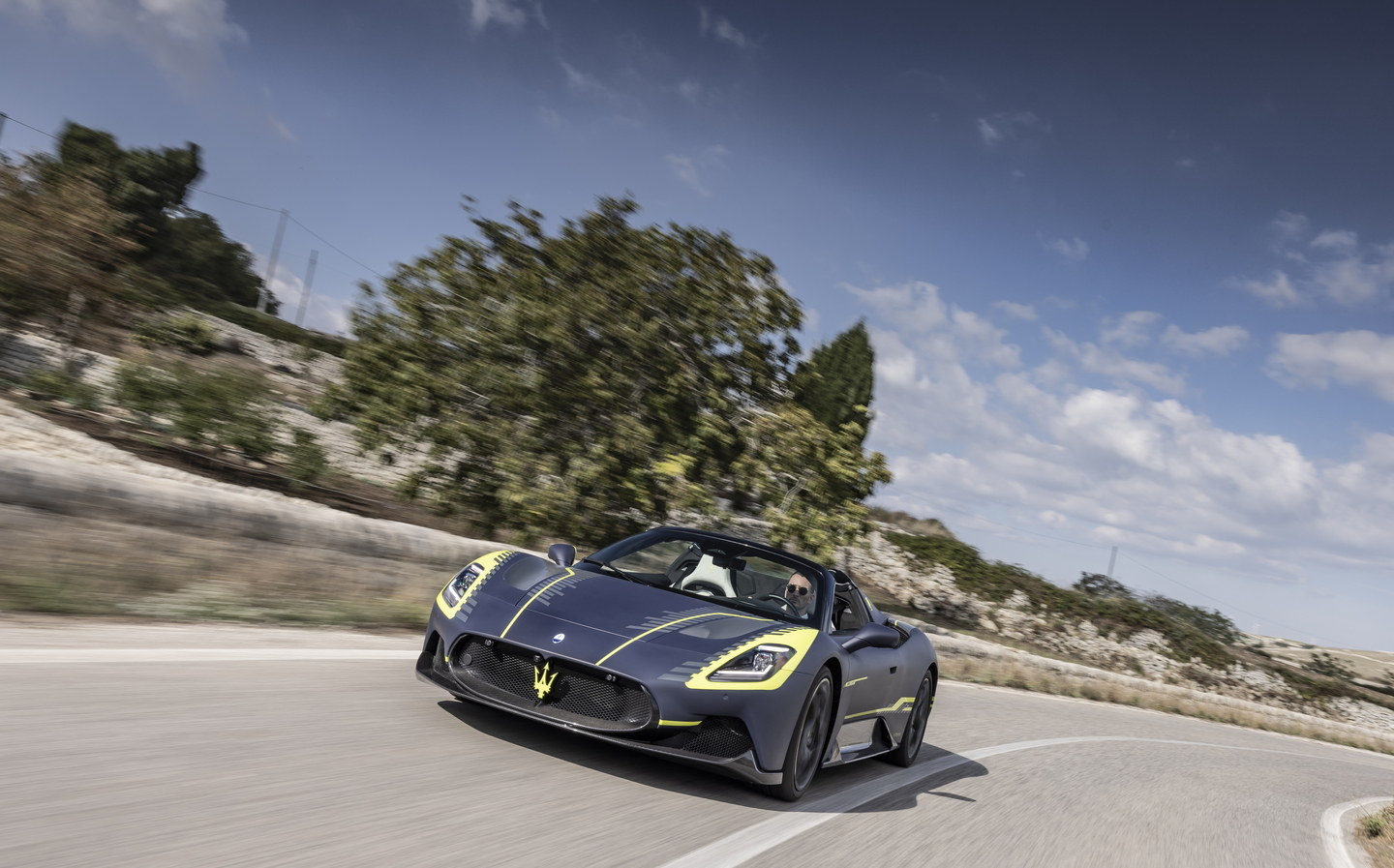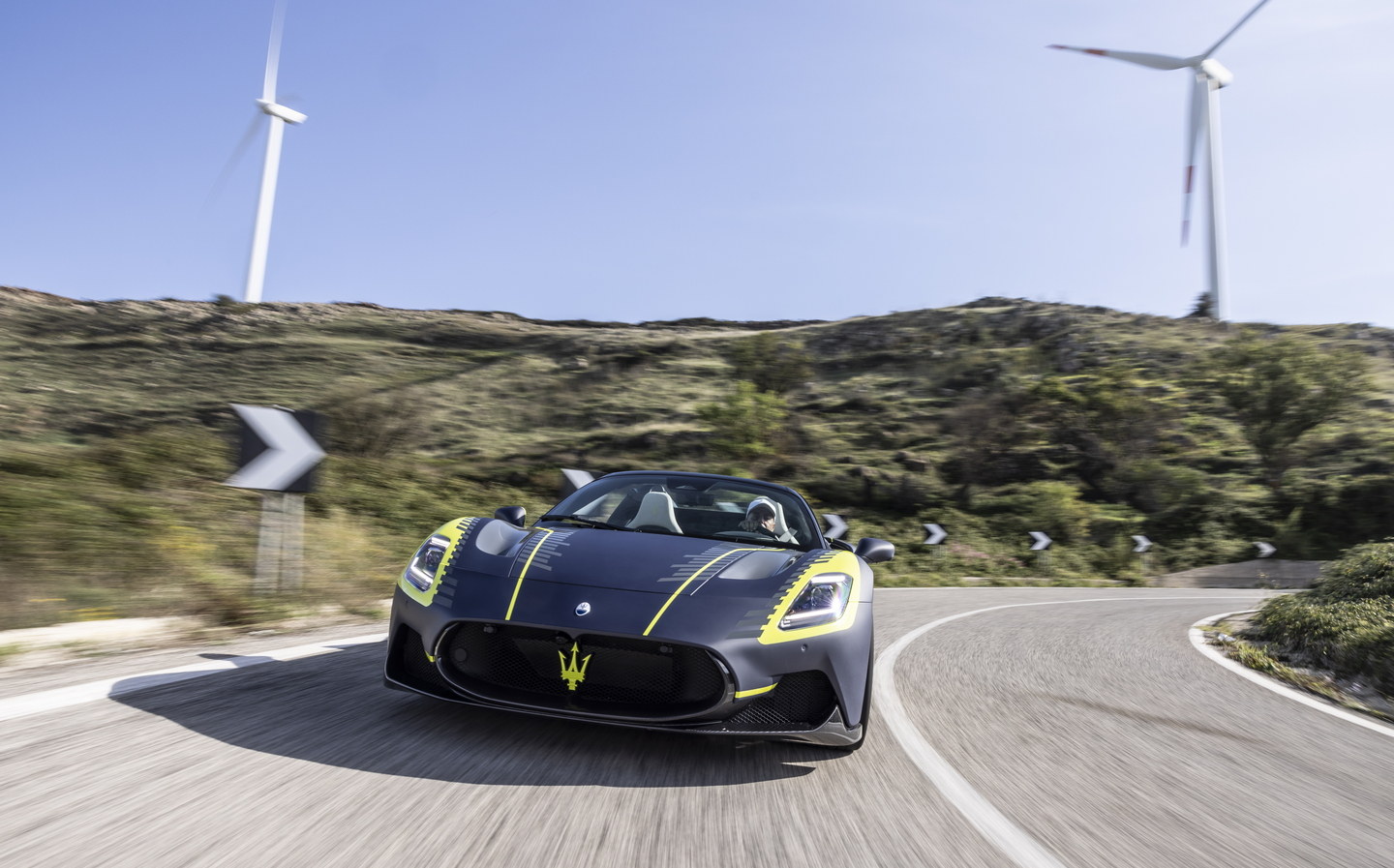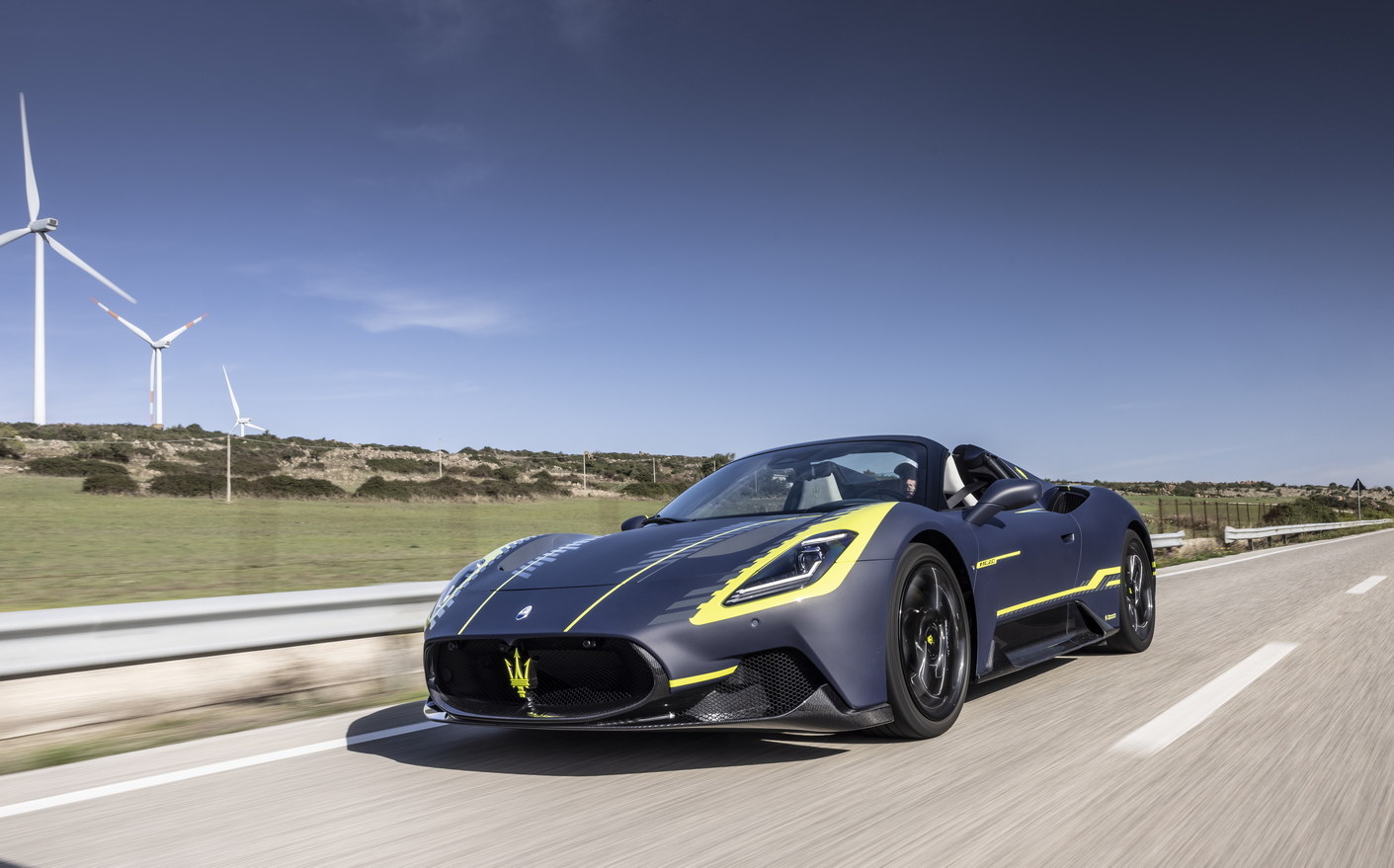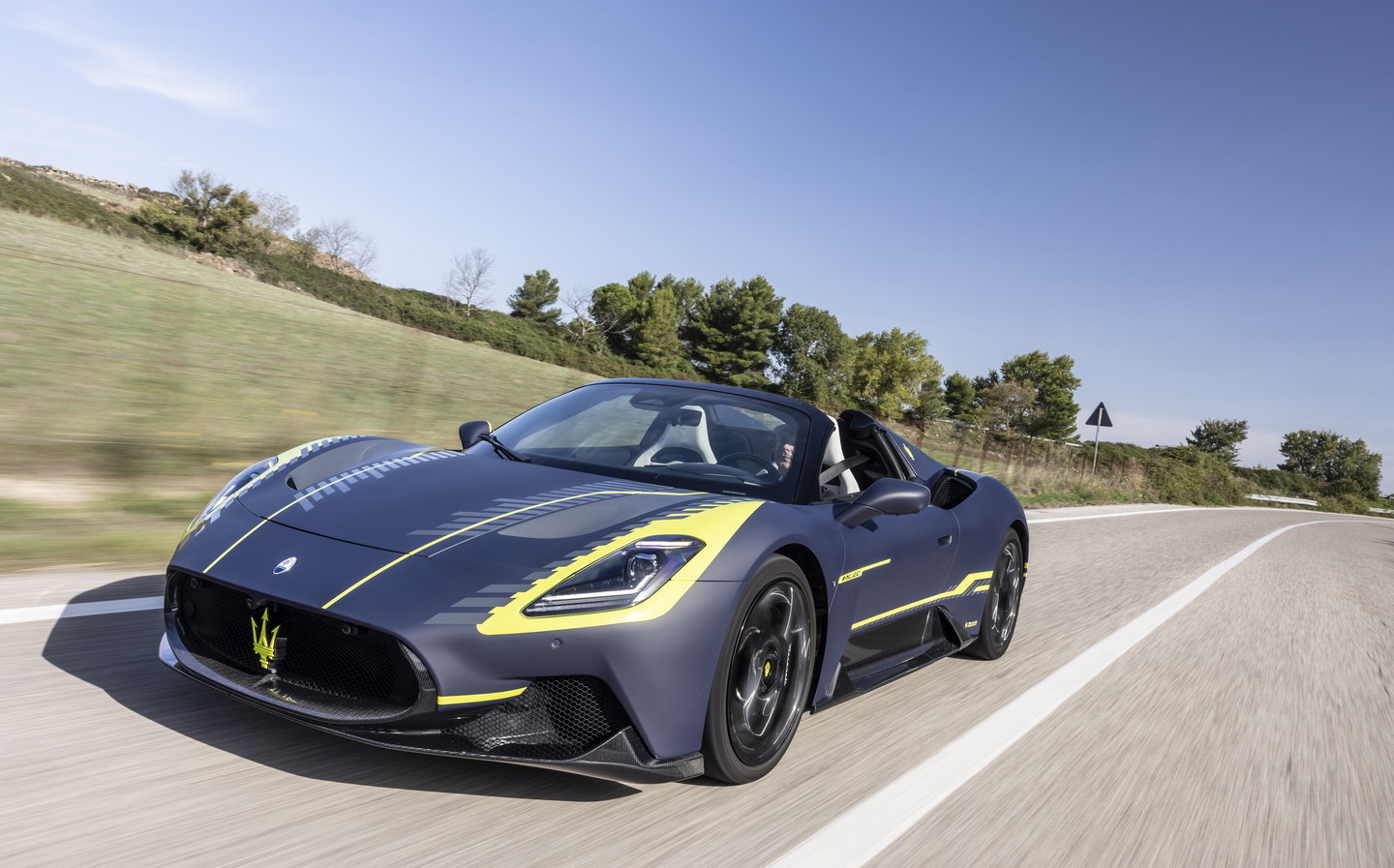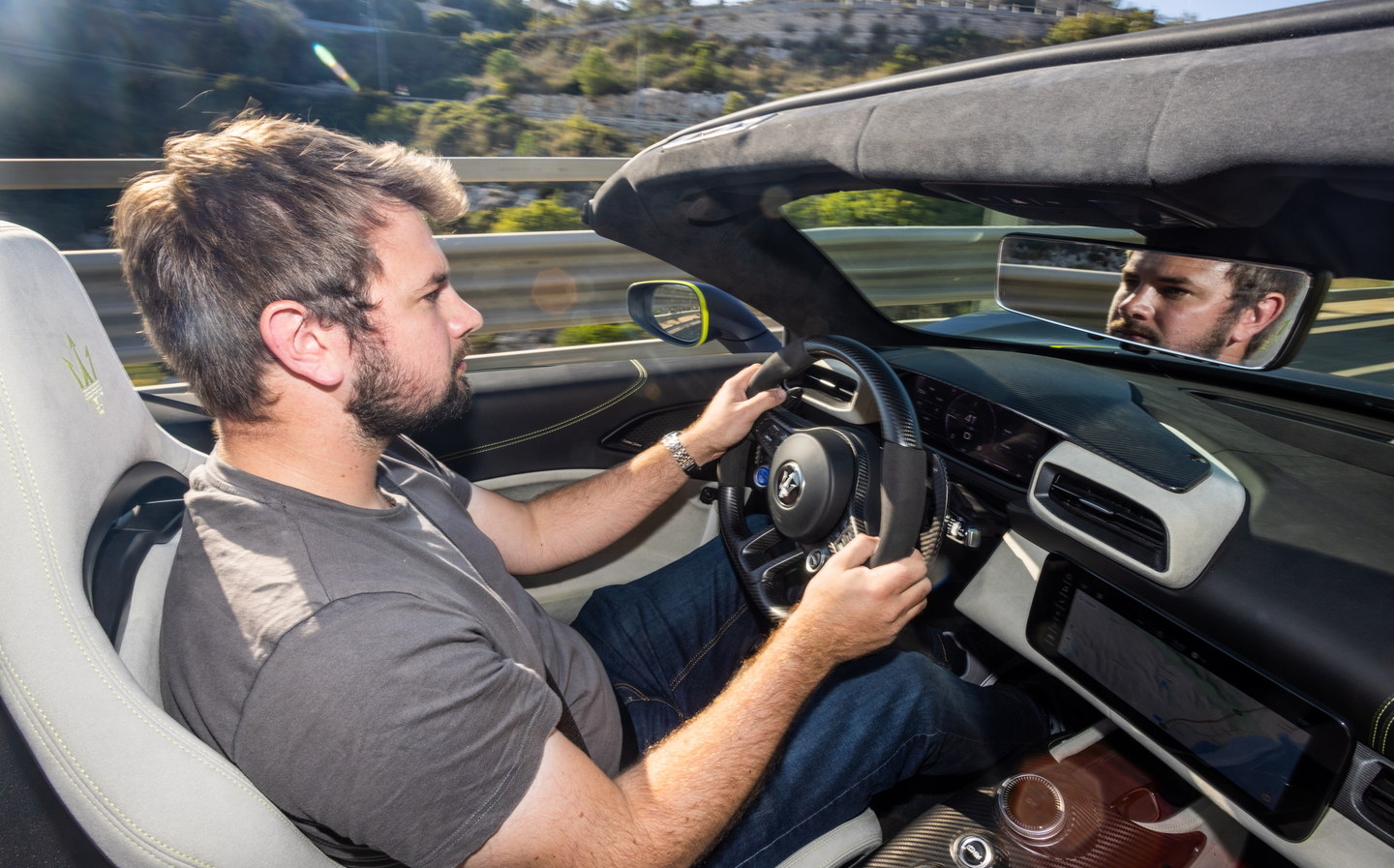Maserati MC20 Cielo 2023 review: Above us, only sky
Ciao bella Cielo!
What is it?
Maserati has not had things its own way in recent years, and a string of sexy but ultimately disappointing and difficult-to-recommend models, including a couple of SUVs and an executive saloon, seems to have diluted the brand’s appeal slightly. But with the MC20 supercar, Maserati appears to have turned a corner, releasing an attractive and capable mid-engined coupé that can mix it with products from its more famous, more popular neighbour Ferrari.
Now, Maserati is rapidly capitalising on the MC20’s success with the almost immediate arrival of a new convertible version. Dubbed Cielo, which means ‘sky’ in Italian, the newcomer has a folding hard-top that tucks away beneath the rear deck, allowing it to transition between cool roadster and stylish coupé at the touch of a button.
It sounds like the best of both worlds, but open-top supercars often come with numerous compromises, including weight gain. So is the Cielo another compromised roadster, or is it yet more evidence of Maserati’s resurgence?

Exterior design and rivals
At a glance, the MC20 Cielo looks much the same as the MC20 coupé, with its smooth lines, dramatic doors and the low, gaping front grille. But once you take a closer look at the rear end, it’s clear plenty of changes have been made. For one, the rear deck had to be raised slightly to accommodate the folding roof, while the big buttresses are there for a little rollover protection, as well as aerodynamic purposes.
Sadly, Maserati couldn’t fit the Cielo with a see-through engine cover, but that hasn’t stopped it making a feature of the otherwise blank space behind the seats. Some new vents have been fitted to make use of the air flowing over the top of the car, and there’s a retractable glass wind deflector that doubles as a rear window when the roof is up.

Customers can also specify a painted Maserati logo on the otherwise blank rear deck, which is a less tacky addition than it sounds – particularly in a subtle colour. It’s all part of Maserati’s personalisation scheme, which aims to give customers the freedom to select or create a livery that suits their desires.
Some designs might be more tasteful than others, but individuality is the whole point of the exercise, and you don’t have to choose a livery if you don’t want to.

Nevertheless, Maserati will hope that such schemes will help the MC20 stand out when compared with the competition. And when rivals include the hugely accomplished McLaren 720S and the glorious Ferrari 296 GTS, every little helps.
Interior and practicality
For the most part, the Cielo’s interior is exactly the same as that of the coupé, so there are two figure-hugging seats separated by a narrow transmission tunnel, as well as a touchscreen infotainment system and a digital instrument cluster.
It also gets a steering wheel that’s home to a refreshingly limited number of buttons, and a few air vents.
It’s quite a minimalist design, but it works beautifully, giving the MC20’s cabin a lovely driver-orientated cleanliness.

The Cielo also brings with it some new features that will arrive on the coupé in 2023. For example, there’s a new drive mode selector that incorporates a small touchscreen, making it easier for drivers to flick between modes and choose a suspension setting.
Aside from that, the Cielo isn’t exactly the same as the coupé – not least because of that folding roof. Instead of using a composite or carbon-fibre panel to keep the rain off, the Cielo has a heavier glass roof that can be frosted electrically via the touchscreen.
That means the cabin feels light and airy even with the roof in place, and Maserati claims to have made up for some of the associated weight by using a lighter folding mechanism.
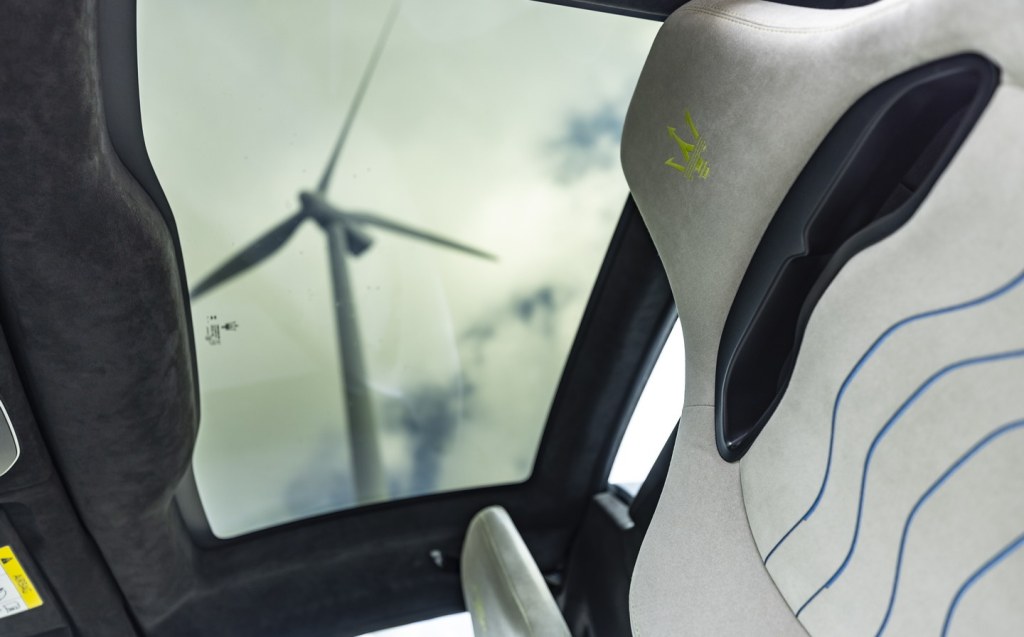
Happily, removing the MC20’s roof has had no impact on practicality, with the Cielo offering exactly the same amount of luggage space as the coupé.
However, with a 100-litre boot and an extra 50 litres on offer in the ‘frunk’, it’s hardly roomy – even by supercar standards. A 296 GTS is going to prove more practical, thanks to its 201-litre luggage tub and the ledge behind the seats.
That said, a six-foot adult can easily get comfortable inside the MC20, even with the roof up, and that isn’t true of every supercar on the market.
Technology and safety
Because Maserati is now part of the Stellantis group of manufacturers, which also includes Alfa Romeo, Peugeot and Vauxhall, the interior technology is effectively shared with some considerably more mainstream models.
Of course, the touchscreen and instrument display have both been redesigned significantly and they have many of their own functions, but the navigation system will be suspiciously familiar to anyone who has driven the latest Peugeot 308.

Not that we’re complaining too much. Yes, that’s far from ideal, but Audi gets away with similar stuff in the R8, and most supercar manufacturers who create their own systems tend to make a hash of it. Ferrari’s infotainment interface, for example, is terrible, and McLaren’s isn’t an awful lot better. And anyway, how likely is it that a Maserati MC20 buyer will have driven, say, a Vauxhall Astra?
Compared with its rivals, then, the MC20’s tech is pretty solid, even if it has its flaws. Our biggest gripe is really with the dependence on the screen for functions such as the roof, but that’s a minor complaint in the great scheme of things. At least Maserati hasn’t over-complicated the steering wheel in the way another Italian supercar maker might.
And for all the MC20’s performance and posing, the car also comes with plenty of safety kit. Happily, Maserati has elected to leave intrusive lane departure warning off the menu, but useful things such as blind-spot monitoring and anti-lock brakes are all readily available.

Performance, power output and acceleration
Like the coupé, the MC20 Cielo is powered by Maserati’s ‘Nettuno’ V6 petrol engine, which sends 621bhp to the rear wheels via an eight-speed automatic gearbox. And because the Cielo only weighs 65kg more than the coupé, the performance figures are much the same. The sprint from 0-62mph takes 2.9 seconds, as it does in the coupé, and the top speed is very similar, at over 200mph.
The Audi R8 is a few tenths slower to 62mph, but the Ferrari 296 GTS and McLaren 720S both manage similar numbers.
The MC20’s numbers don’t stand out but it needs them if it wants to compete with these big names, and it does so with its own distinct character.
In many ways, the Nettuno engine isn’t quite as raucous as the 296 GTS’s 2.9-litre engine, and nor does it have the muscle of the 720S’s V8, but it snarls its way up and down the rev counter, popping its way through gear shifts, and there’s a pleasant whoosh from the turbo wastegates when you lift off the throttle. It provides a savage kick in the back, too, particularly in its most aggressive Corsa mode.

Naturally, it won’t be the most efficient thing in the world – the Cielo is marginally less efficient than the coupé, achieving 24.1mpg – but that’s fairly common in cars of this type and most customers won’t care.
Admittedly, the Ferrari 296 GTS’s complicated hybrid system makes it considerably more efficient on paper, but we defy anyone to use that car in its most efficient way. For most customers, it’ll prove little more economical than the MC20.
Ride and handling
Removing the roof from a supercar is often a good way of spoiling the car’s handling characteristics, robbing it of some natural rigidity. But Maserati says it has fine-tuned the MC20 Cielo to ensure the roadster feels as similar to the coupé as possible, adding extra reinforcement in places and tuning the suspension. Whatever the engineers have done, it has worked, and the Cielo drives beautifully.

The steering is nothing short of sublime, the balance is nigh on perfect and the brakes are hugely powerful, even if the optional carbon-ceramic discs fitted to our test car squeaked irritatingly until they warmed up.
All those things might sound disparate, but they mean drivers can have enormous confidence in the Cielo’s ability when they approach a corner. Add in tenacious grip and instant responses to any input from the driver, and the car becomes very intuitive and surprisingly easy to drive.
Yes, it’s very wide and incredibly low, so the carbon-fibre underside feels vulnerable over speed bumps and other uneven surfaces, but it’s actually very competent around town. Visibility is an issue thanks to the buttresses behind the seats, but Maserati has gone some way to solving that with a rear-view mirror that doubles as a rear-view camera display, giving you an unobstructed view of whatever’s behind you.

It’s smooth, too, thanks to the slick gearbox and the supple suspension, which allows the car to glide over all but the most broken surfaces. It isn’t quite as comfortable as some of McLaren’s creations, but it isn’t far behind, and it makes for a fantastic grand tourer. You could quite happily dash across the continent in one of these — or at least you could if the seats weren’t quite so hard.
For those concerned that all this makes the MC20 Cielo sound more like a long-distance cruiser than a hard-charging supercar, fear not. Yes, the Maserati is comfortable and it’s great for posing in town, but it’s still a fantastic car to drive.
And the engineers in Italy told us they are considering more hardcore versions of the MC20 in future, which should make enthusiasts and collectors happy.
Pricing and on-sale date
At £229,000, the MC20 Cielo is around £30,000 more expensive than the coupé, but it’s significantly cheaper than the Ferrari 296 GTS with which it potentially competes.
Admittedly, the Ferrari is a plug-in hybrid, making it more complicated to design and build, but it makes the MC20 look like strong value for money – especially as it’s more exciting and more interesting than almost anything else on the market.

Verdict: Maserati MC20 Cielo review
The MC20 is widely regarded as one of the all-time great Maseratis, and the Cielo has done nothing to tarnish that image. It may be compromised by its extra weight, and it may suffer slightly for that when lapping a racetrack, but as a road-going supercar, it’s sublime.
The neat roof, the exquisite balance and the formidable performance make it usable and easy to live with in a way not normally associated with Maseratis. In the rarefied atmosphere of supercars, it’s even good value.
Related articles
- After reading our review of the Maserati MC20 Cielo, you might like to find out what Jeremy Clarkson thought about the MC20
- Or read our review of the Maserati Grecale SUV
- Take a loot at our review of the Ferrari 296 GTS
Latest articles
- Should I buy a diesel car in 2025?
- F1 2025 calendar and race reports: The new Formula One season as it happens
- Zeekr 7X AWD 2025 review: A fast, spacious and high tech premium SUV — but someone call the chassis chief
- Denza Z9GT 2025 review: Flawed but sleek 1,062bhp shooting brake from BYD’s luxury arm
- Extended test: 2024 Renault Scenic E-Tech review
- Best-selling cars 2025: The UK’s ten most popular models of the year so far
- Audi A6 Avant 2025 review: Trusty executive estate ticks expected boxes, and there’s still a diesel option
- Keir Starmer eases pressure on carmakers to sell EVs in response to ‘global economic headwinds’
- Ferrari 12Cilindri Spider review: Heady blend of traditional and futuristic becomes even more intoxicating after lid is removed






